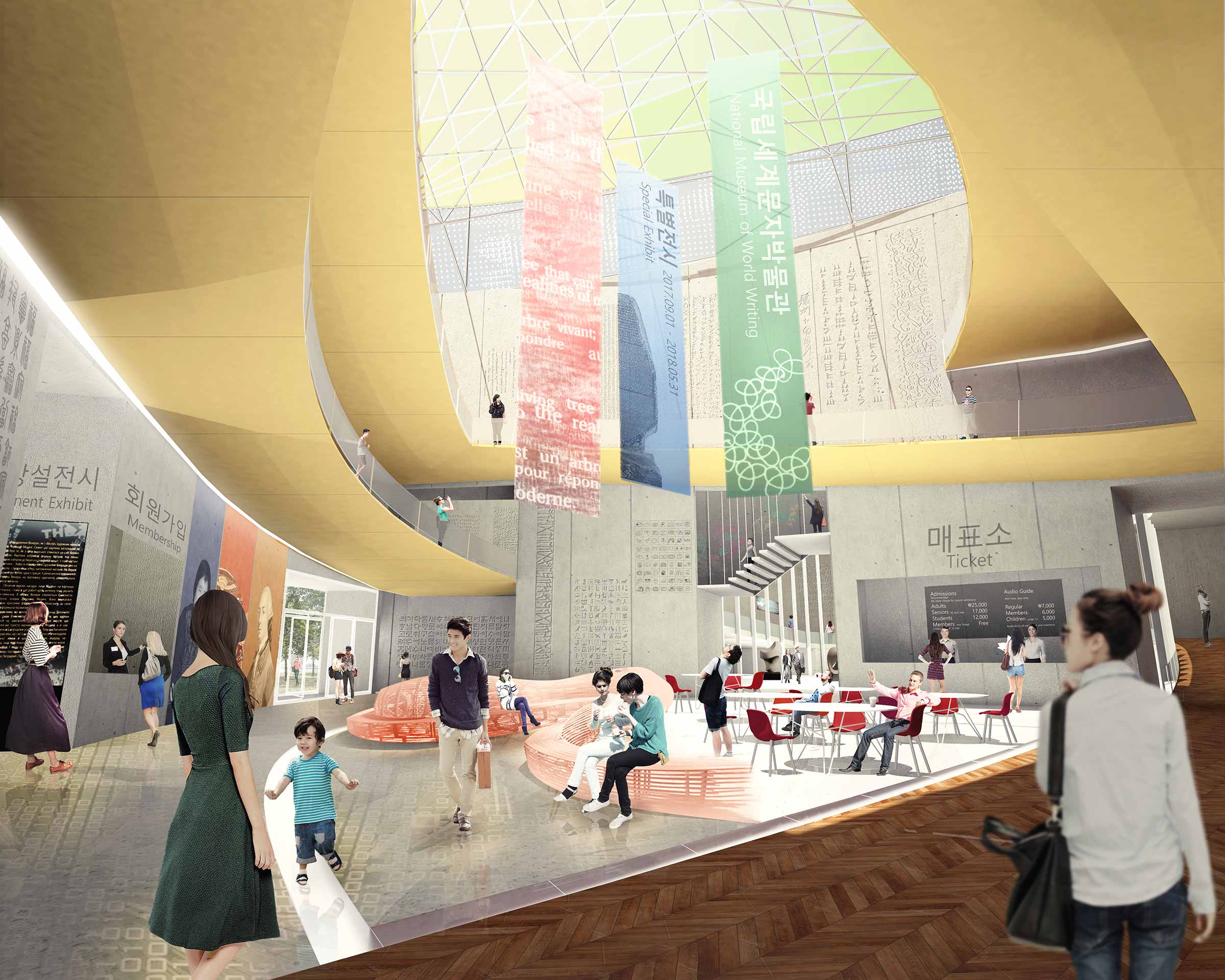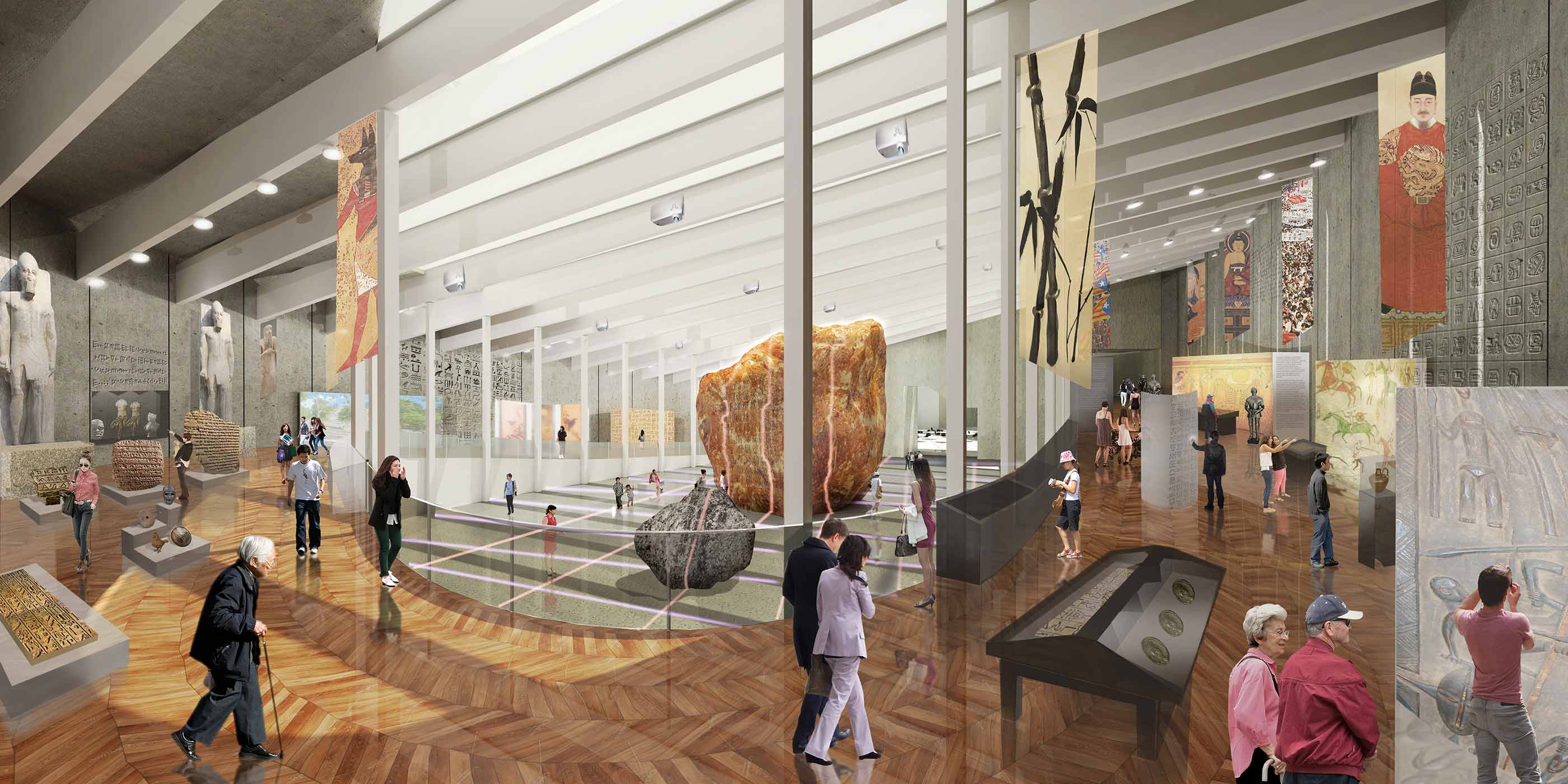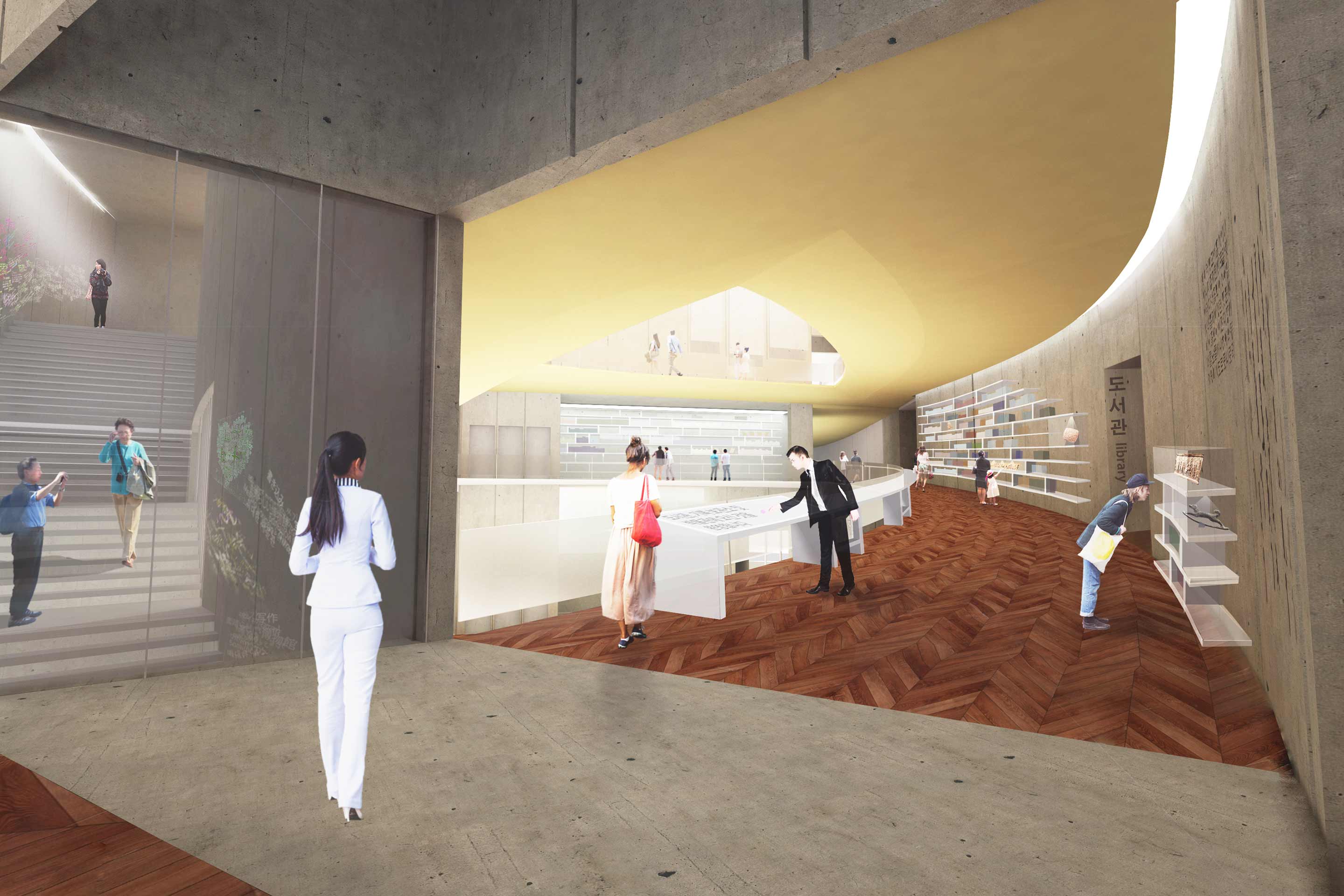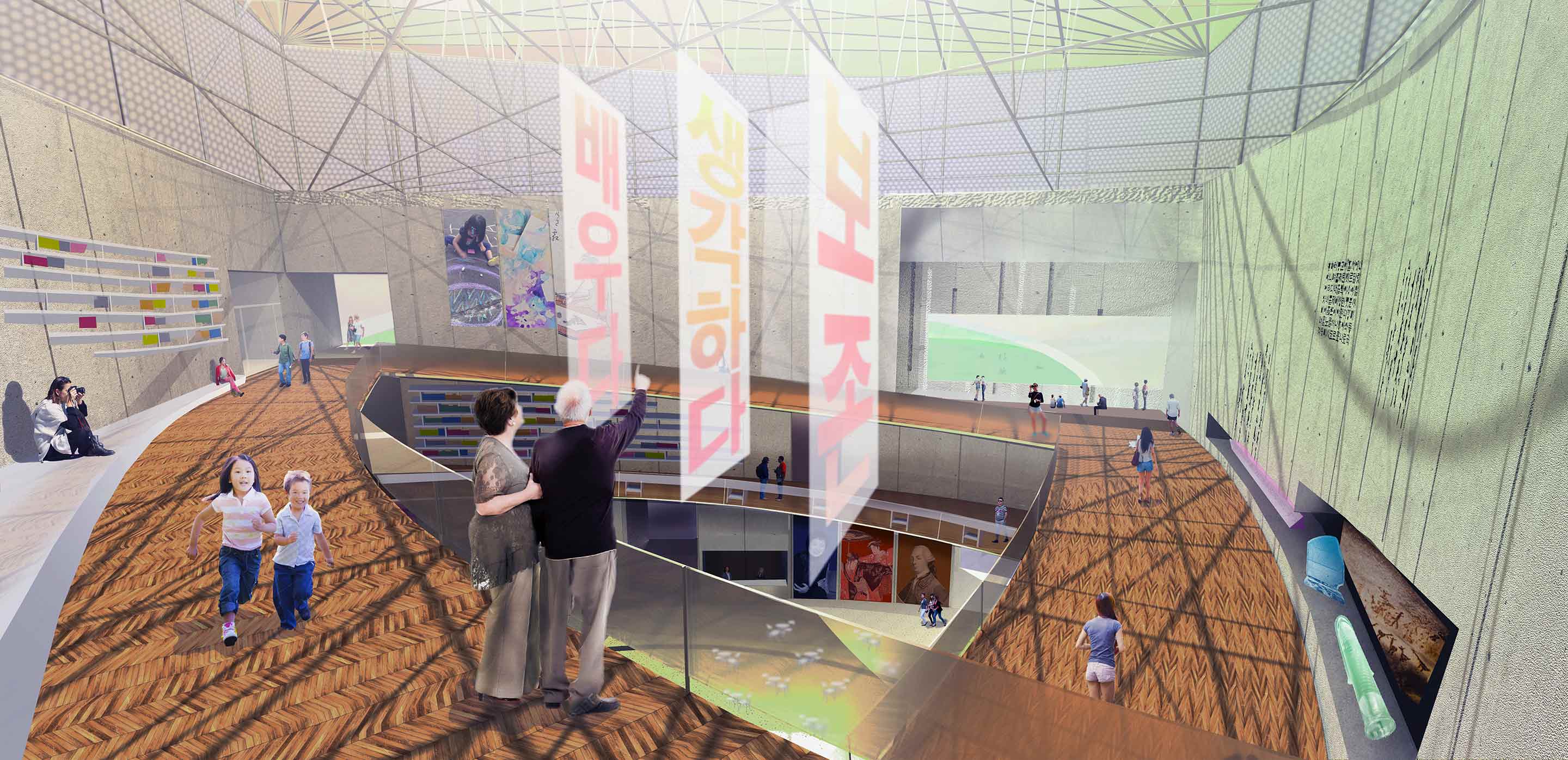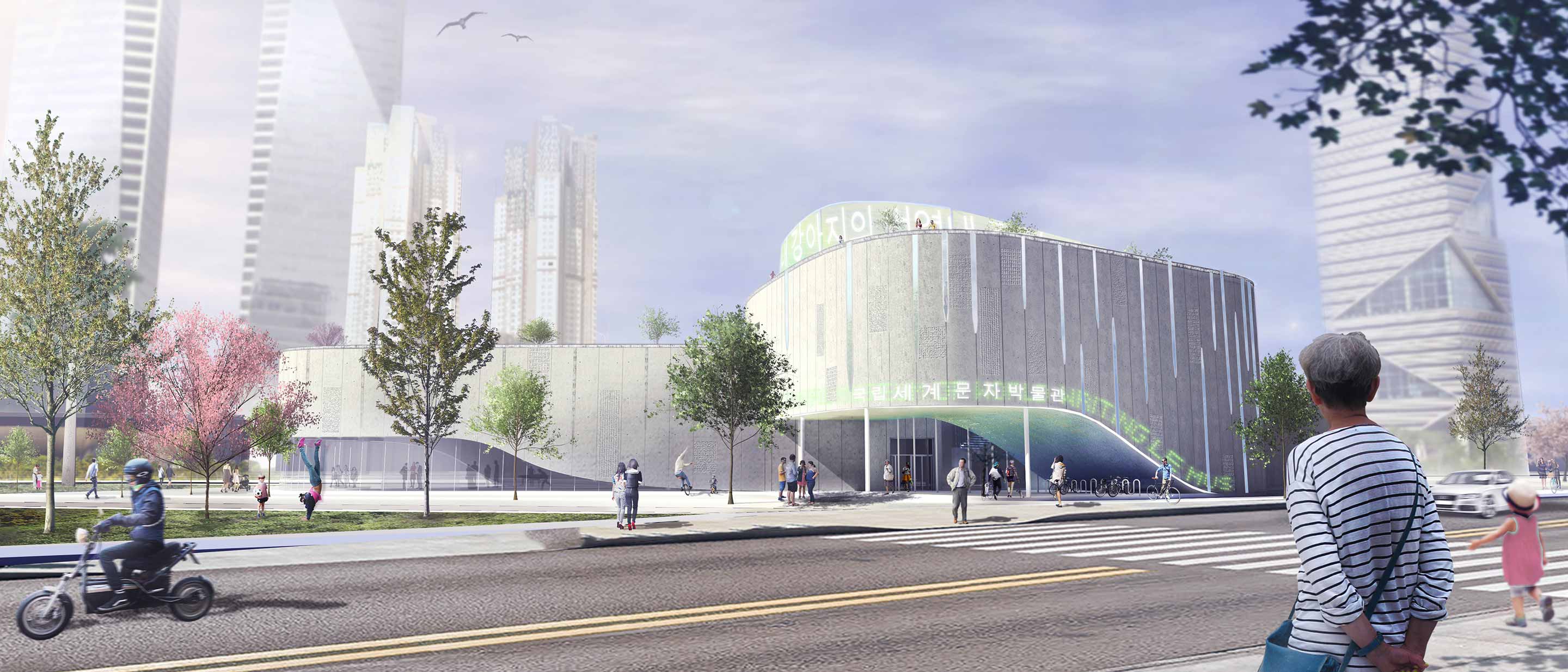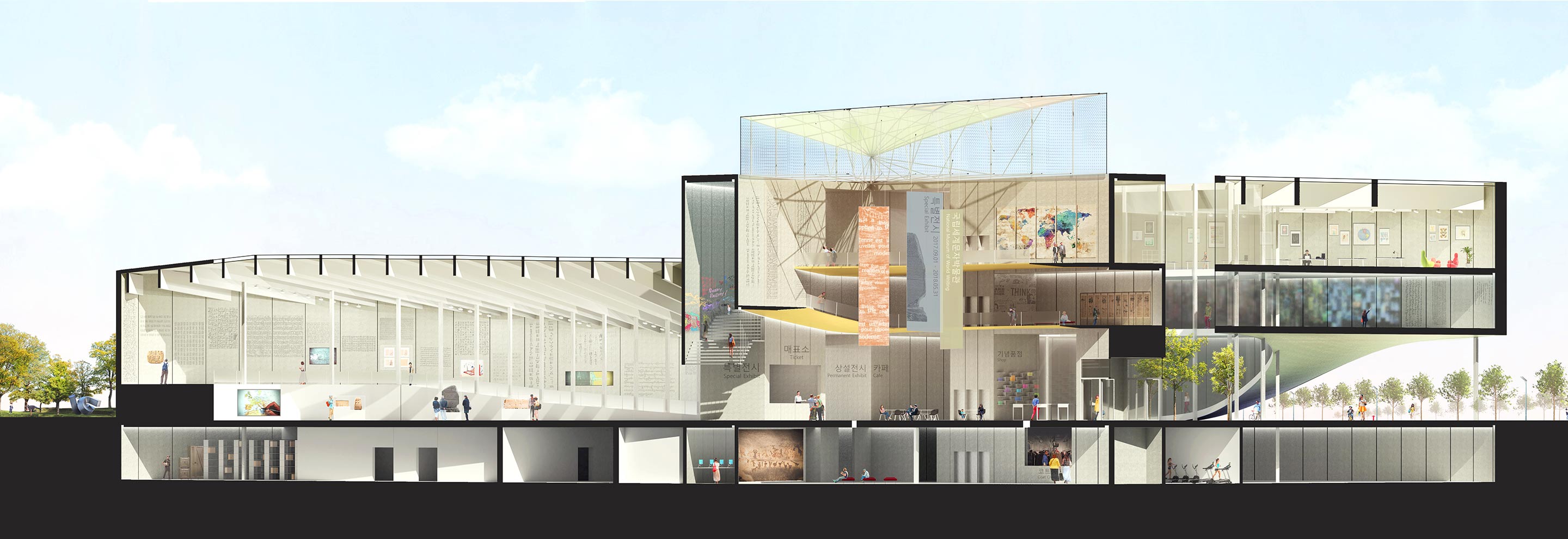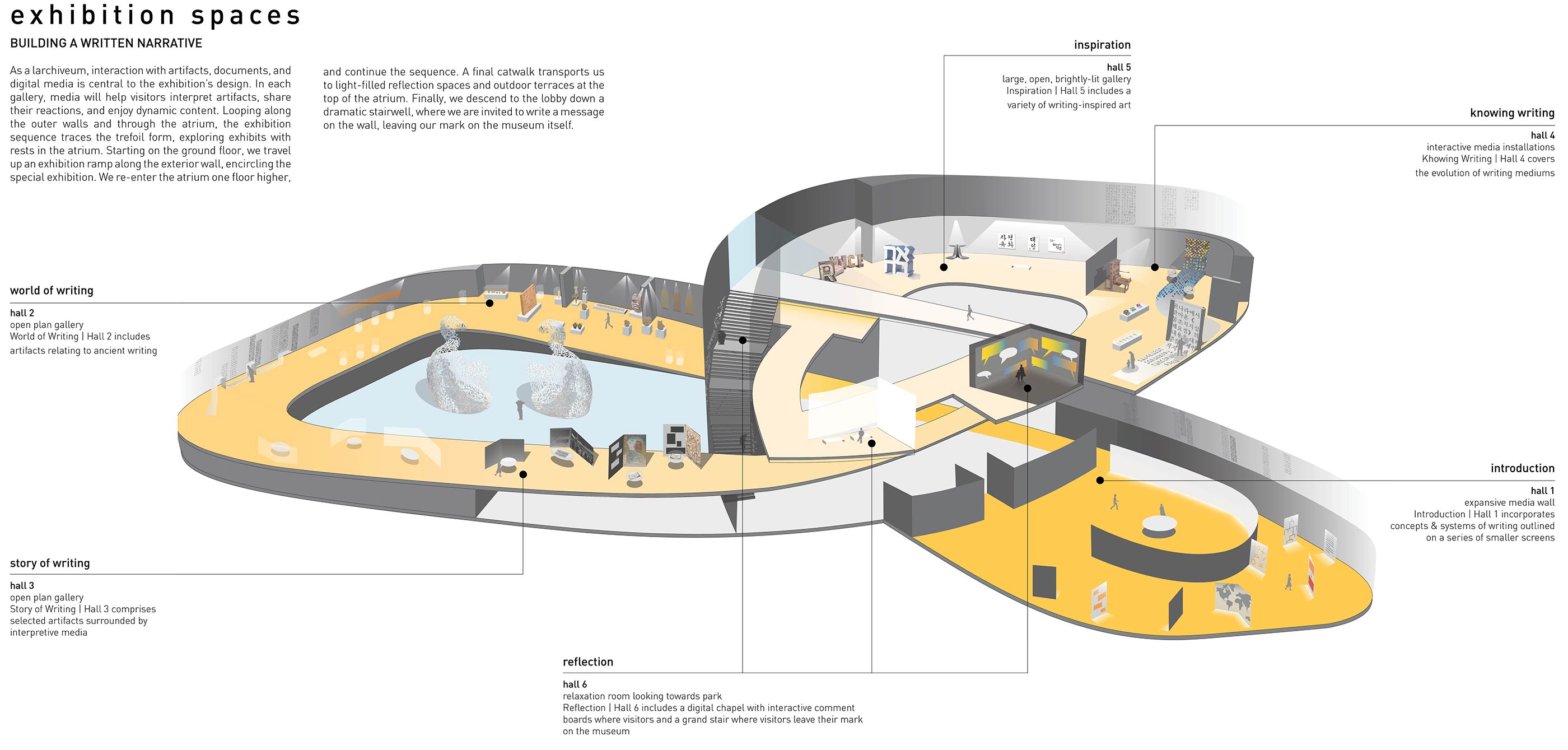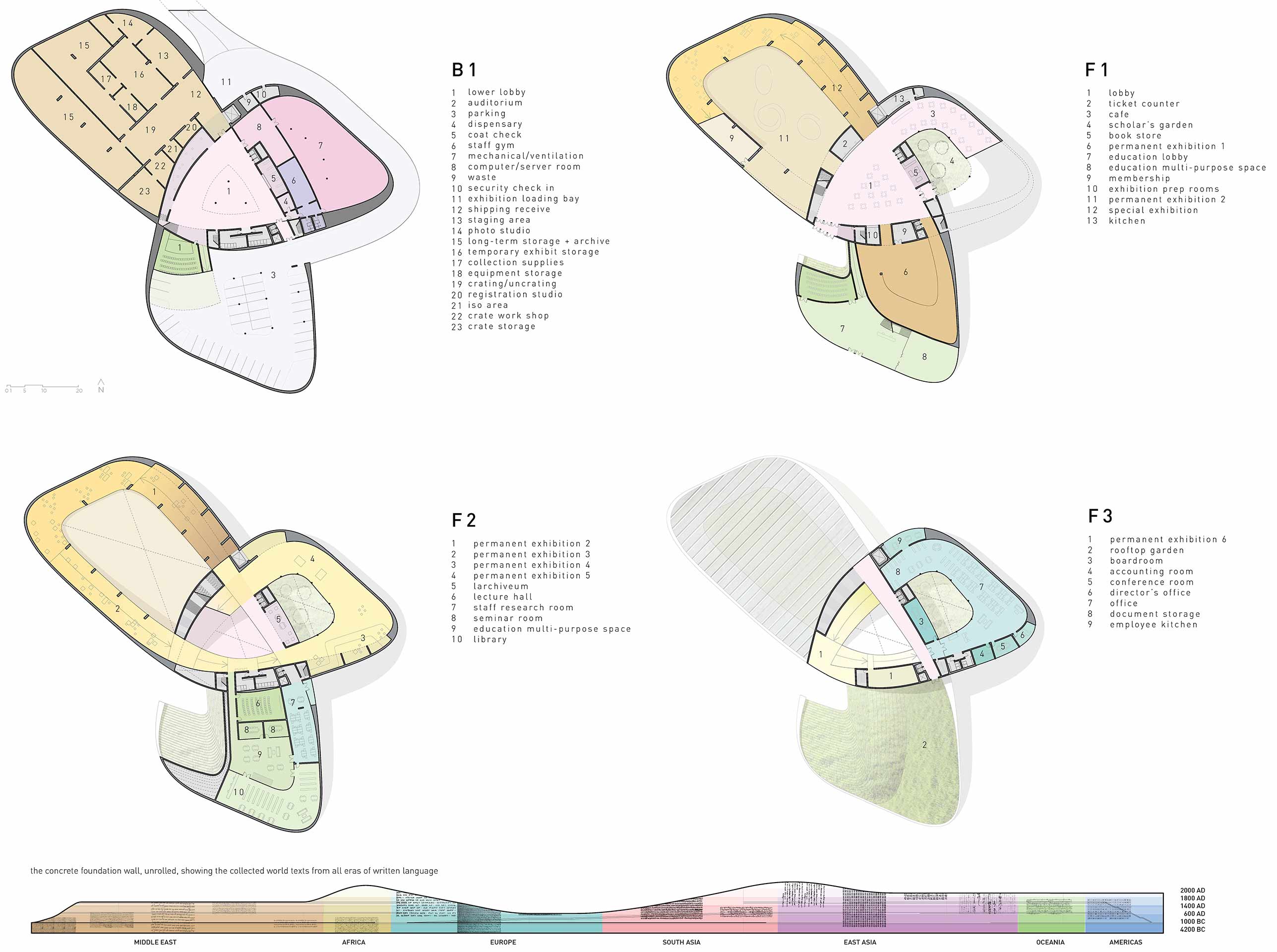Korean National Museum of World Writing
Incheon, South Korea • 2017

A museum interweaves old materials and new media to reflect the history of writing.
The modern museum does not simply document culture, it creates culture. Etched into the landscape, the National Museum of World Writing is a landmark of Central Park. Its form and its graphic display counterbalance the existing structures. The grounds are continuous with the existing strolling paths while defining a new geometry.
Writing is the organizing force of civilization. The world’s first writers stamped and scratched simple marks into malleable surfaces. Scripts have evolved over millenia as we retrace their forms onto new materials. The National Museum of World Writing engages this history by writing a glyph, an elemental character, into the landscape of Songdo Central Park.
The glyph becomes the concrete foundation wall that shapes and supports the structure. The wall thickens, lifts, and lowers along its looping path to create cores and openings. This infinite loop blends museum, library, and archive functions into a seamless larchiveum experience, with a central atrium open to park visitors. During construction we solicit text contributions worldwide, and selections are cast into the concrete walls. LED displays, also set into the walls, display messages dynamically from around the globe. The contemporary overlays the deep history of text. At its very foundations, the museum signifies the elemental importance of writing.
Its form is a trefoil, a continuous mark representing the overlap of 3 programs: public, curatorial, and archival. This sinuous concrete foundation structures all museum functions - rising, falling and breaking apart according to program. Old materials and new media interweave throughout the museum to reflect the history of writing in the structure itself.
DESIGN TEAM
Jordan Parnass
Marijke Huelsman
Elizabet Bereslavskaya
Yvette Liu
Andrew Keung
Simisola Ibikunle
Jeremy Wolin
CONSULTANTS
Collaboration with Mesh Architectures

